19th June 2024 - 6th July 2024
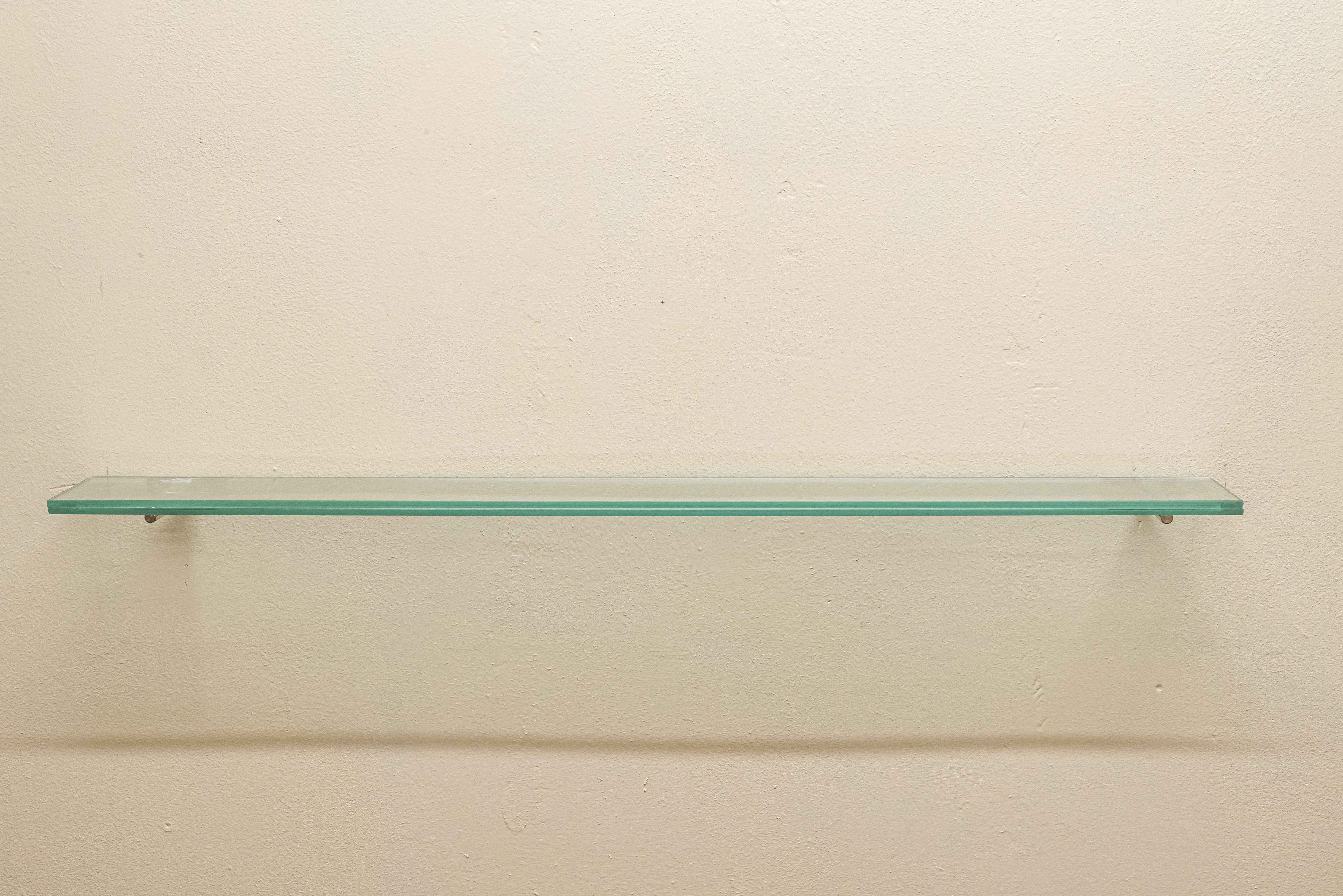
Detail from (Shelf). Glass, brackets and hair. 95x11cm. ? - 2024.
The room
The show takes place in a small windowless space, a box. Juliette warns me: the room has no quality, per se. Juliette qualifies: from a room one could not ask for less; it has four walls, a door and a ceiling, and one light. Here we are asking more of this room.
The band
My grandma’s thick fingers were a mobile display for rings in gold and precious stones. A rosary ring for a religion she did not believe anymore, an engagement ring from a marriage that widowed her. One was passed on to me in my teens – a warm gold band holding a skinny green stone in a sharp shape, elongated. It only fit on one of my fingers, and was light but felt heavy and like an extremity of her soft body. I was proud to be trusted with something old; I had not met many objects of an age that implied lineage and survival. In Poland, most objects made before the war – the one war with its infinite scattered trail – no longer exist; they are not expected to exist. The metals have been molten and perhaps we believe they deserved to be molten, and the antique markets are like deserted battlefields; only military souvenirs remain. I imagined my grandma must have defended the ring with her life. “My mother told me that’s Russian gold”, said my schoolmate at a sleepover. “The stone is a shard of glass. My mother can tell the difference, she used to trade. She says you couldn’t sell this to anyone.” I’m unsure if I understand what Russian gold is to gold and what glass is to stone.
The bind
A lien (/ˈliːn/ or /ˈliːən/) is a form of security interest granted over an item of property to secure the payment of a debt or performance of some other obligation. The owner of the property, who grants the lien, is referred to as the lienee and the person who has the benefit of the lien is referred to as the lienor or lien holder. The etymological root is Anglo-French lien or loyen, meaning "bond", "restraint", from the Latin ligamen, from ligare "to bind".
The box
The most precious things are kept in small containers. For jewellery, these are lined with velvet or plastic covered with fuzz that dents and collects dust. The smallest and prettiest boxes are made for pills: their holy molecules are most precious.
The bond
The takeaway box shapes my dinner into a picture frame. The organic matter would not have become rectangular otherwise. Things that we can look through can be easily changed: they warp and stain.
r/askscience, 13 yr. ago [deleted]: “Why does Tupperware stain?”
“Tupperware is plastic, obviously. This plastic, like many, is made of long non-polar molecules. Oils are, basically by definition, also non-polar. Polar things tend to stick to polar things and non-polar things to non-polar things. You notice this a lot with pasta sauce. Now, pasta sauce has oil in it, but it also has all those molecules that make it red. One of the main molecules that do this is lycopene. Lycopene dissolves in oil, so it's free to float around and bind to new things, and it's very coloured, so it doesn't take much of it to stain. Take a look at its atomic structure. It's long, straight, and the lack of any letters in the structure shows that it's all carbon and hydrogen. Very, very non-polar. Tupperware (the semi-transparent flexible containers) are made from low-density polyethylene. In terms of its structure, it's a long chain of just carbons and hydrogens. Pretty similar to lycopene, right? That's why they stick to each other really well. They're both about as far away molecularly as you can be from water, so water doesn't penetrate the plastic like lycopene and oil do. That also explains why it's so hard to wash away the red stains once they're in your containers.”
The hold
A holding company does not produce goods or services itself. Its purpose is to own bonds. In some jurisdictions around the world, holding companies are called parent companies. The asset stripping and subsequent bankruptcy proceedings of Sears Holdings Corporation, the holding company of Kmart and Sears retailers that ended in a leveraged buyout and collapse in 2018, is considered one of the prime examples of the recent phenomenon referred to as “retail apocalypse”.
The anchor
A big-box store is a physically large retail establishment, usually part of a chain of stores. The term "big-box" references the typical appearance of buildings occupied by such stores. Typical architectural characteristics include a large, free-standing, generally single-floor structure referred to as a shoe-box, built on a concrete slab. The flat roof and ceiling trusses are generally made of steel, and the walls are concrete blocks clad in metal or masonry siding. The structure typically sits in the middle of a large, paved parking lot. The exterior is designed primarily for access by motor vehicles. After bankruptcy or abandoning the site, the lot may be referred to as a greyfield. Greyfield is a neologism that means an underused real estate asset – a comparison to greenfields, meaning underused natural land, and brownfields, meaning contaminated post-industrial land. Redeveloping a greyfield can be much cheaper than building on a greenfield site or a brownfield site.
An "anchor tenant", sometimes called an "anchor store", "draw tenant", or "key tenant", is a considerably larger tenant in a shopping mall. They are typically located at the ends of malls, sometimes in the middle. With their broad appeal, they are intended to attract a significant cross-section of the shopping public to the center. They are often offered steep discounts on rent in exchange for signing long-term leases in order to provide steady cash flows for the mall owners.
Shopping centres with anchor stores have consistently outperformed those without one, as the anchor helps draw shoppers initially attracted to the anchor to shop at other shops in the mall.
Thus, a mall which loses its last anchor is often considered to be a dead mall.
Text by Tosia Leniarska.
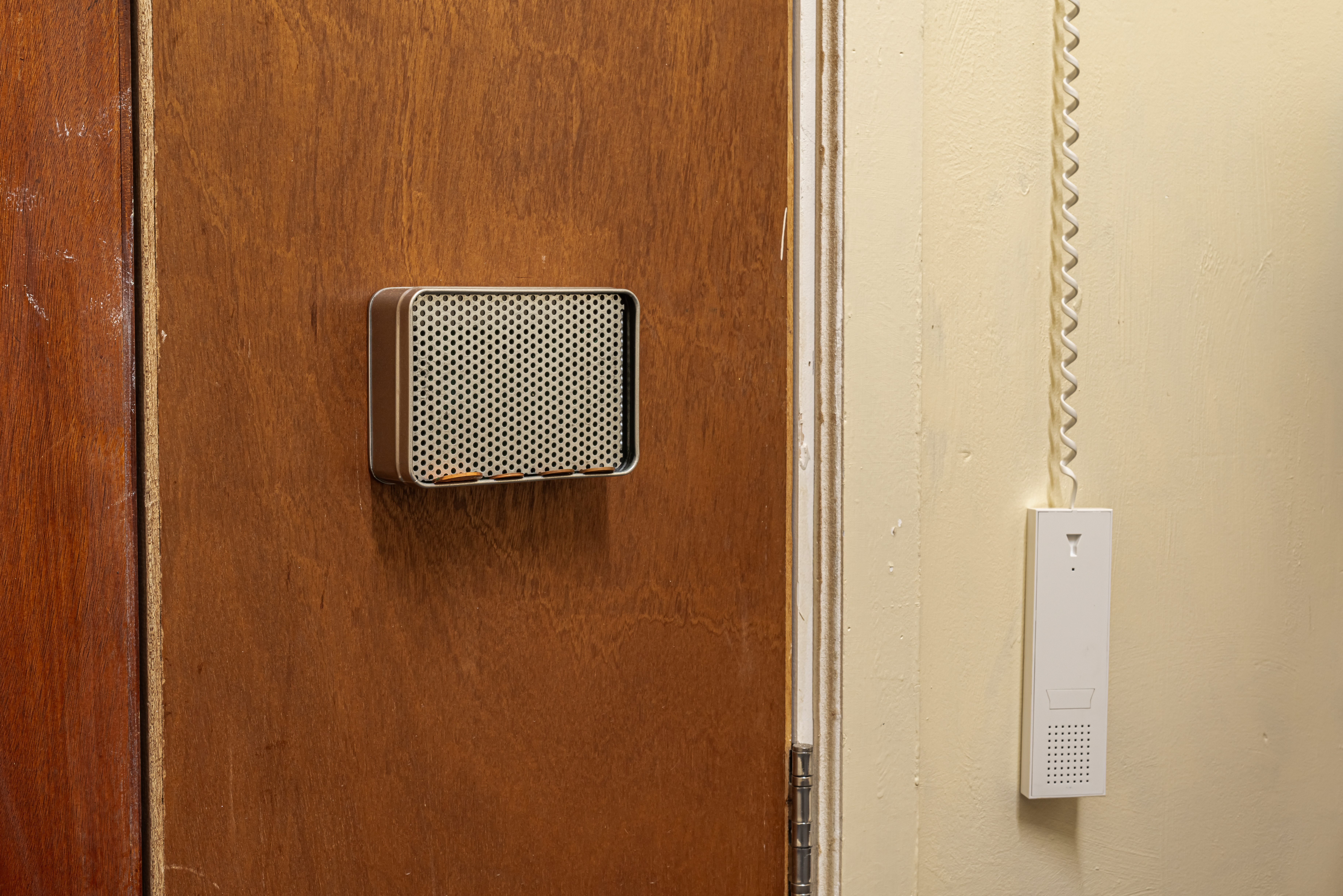
Untitled. Aroma of luxury leather, tin, four coins and foam.10x14x4cm. 2024.
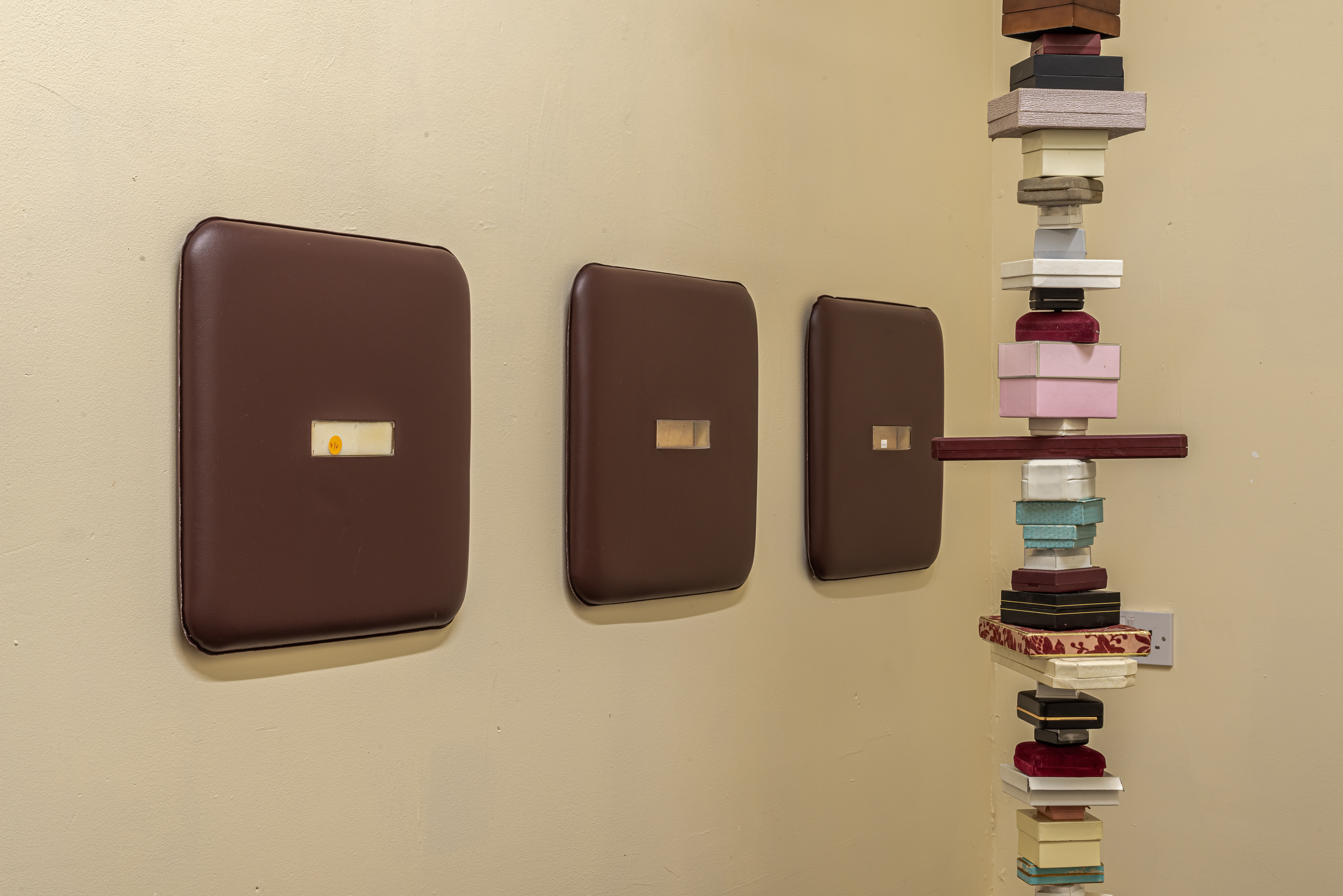
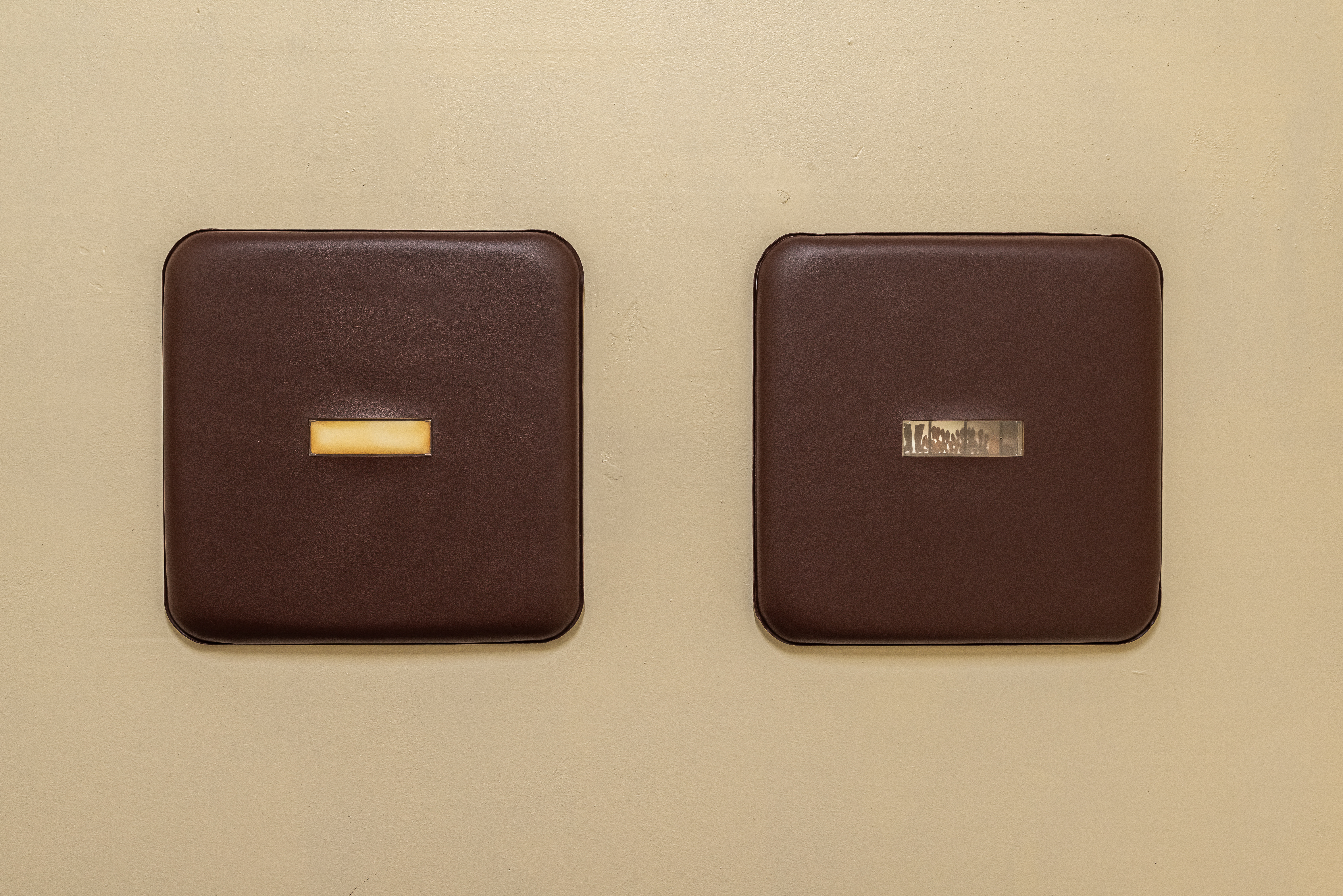
Two panels of Untitled. Series of five panels with foam, plastic, faux leather and paper installed 108cm from the floor. 40x40cm. 2024.
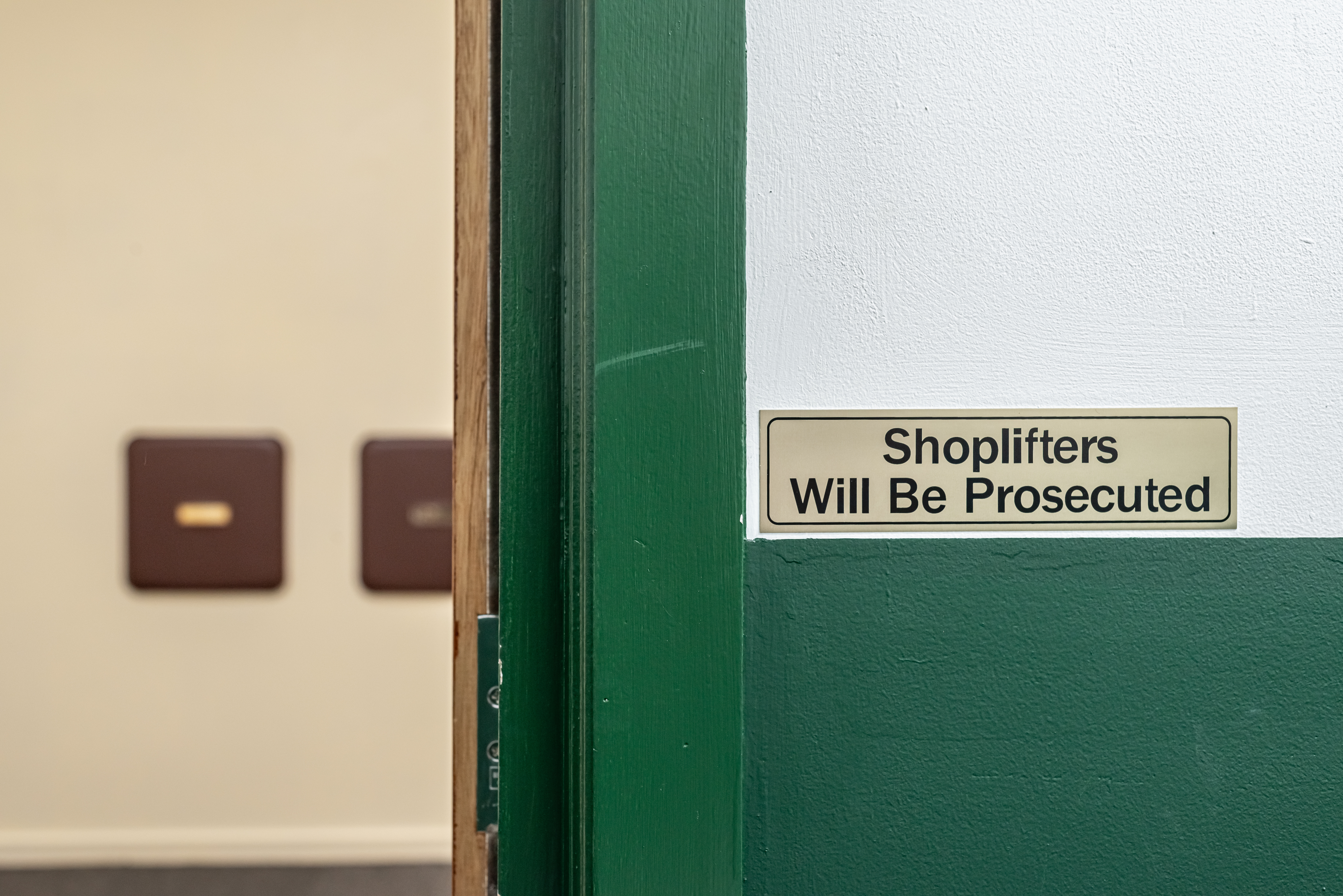
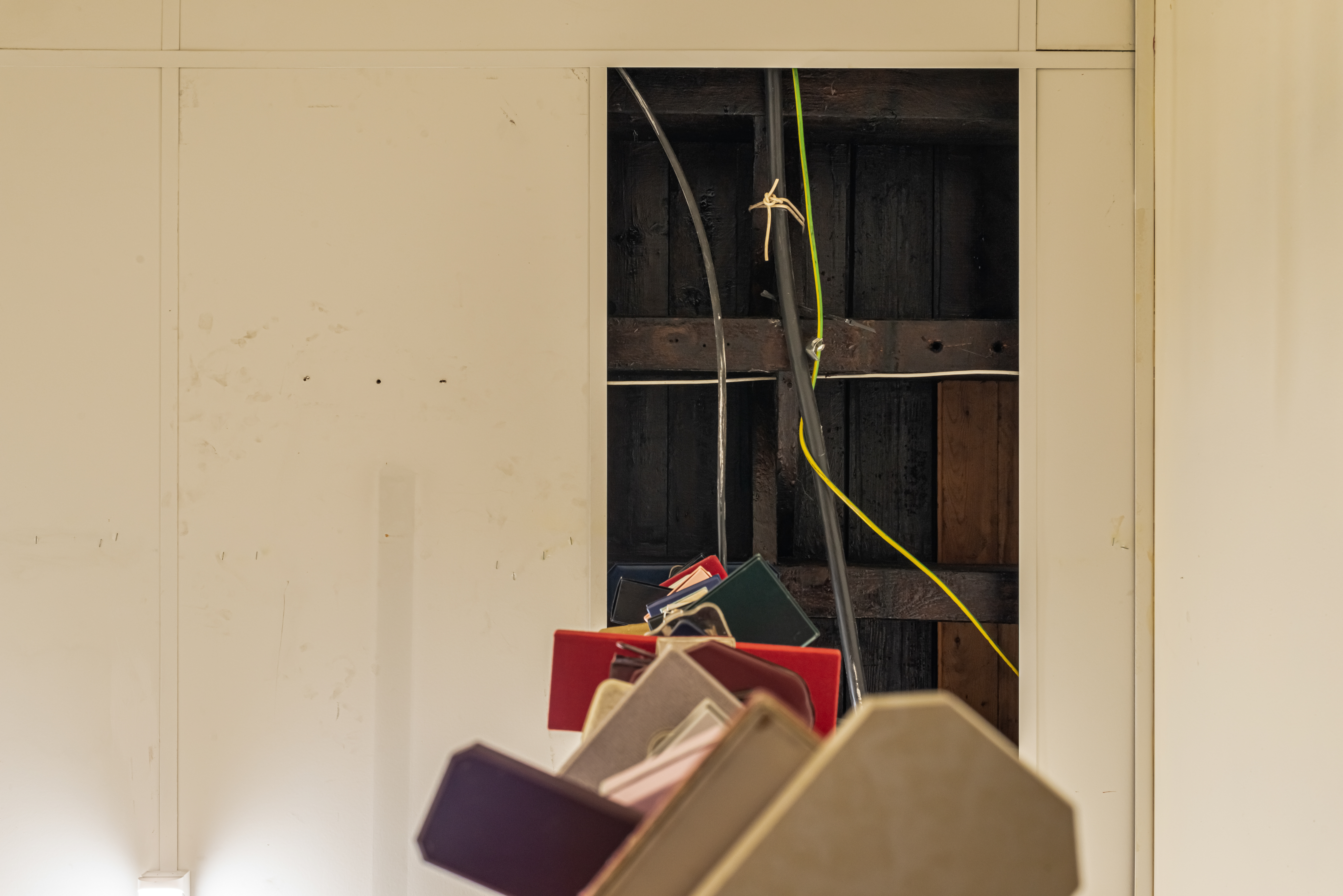

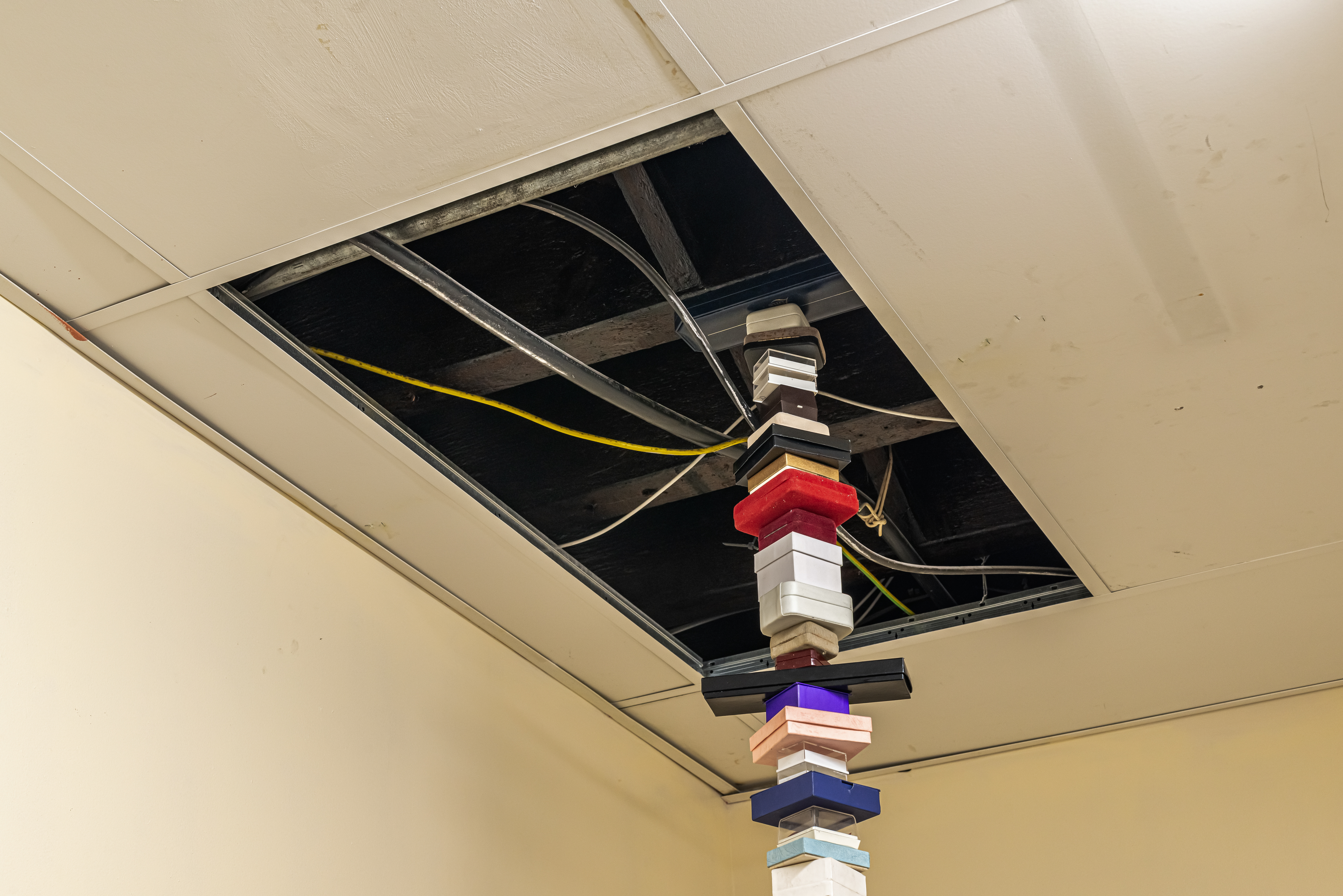
Detail from (Stack). Plastic, metal, paper, one train ticket, foam, hair, one rhinestone and various boxes stacked to the highest point of the ceiling from the floor. Dimensions variable. 2024.
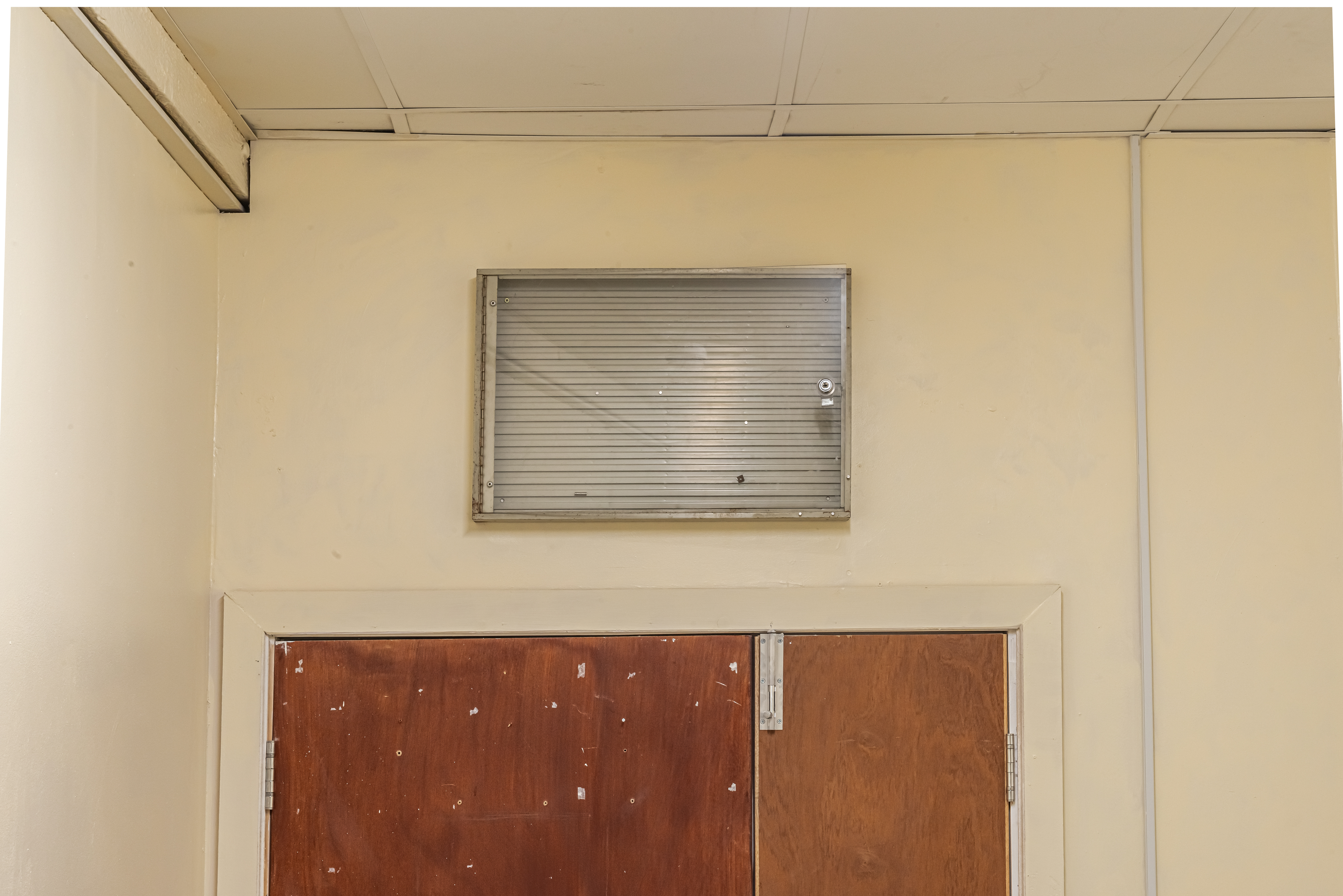
Untitled Metal, magnets and plastic.40x60x5cm. ? - 2024.
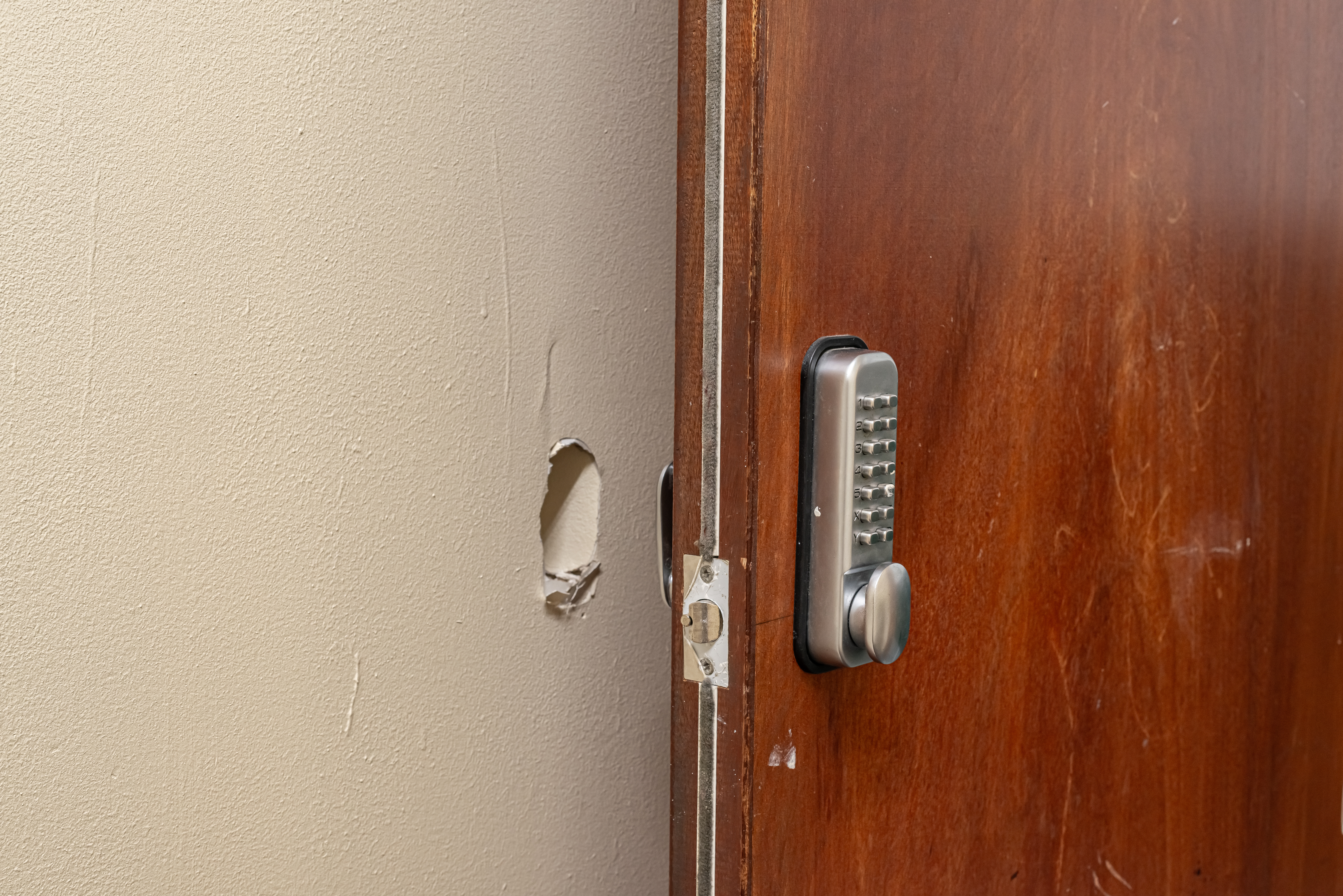
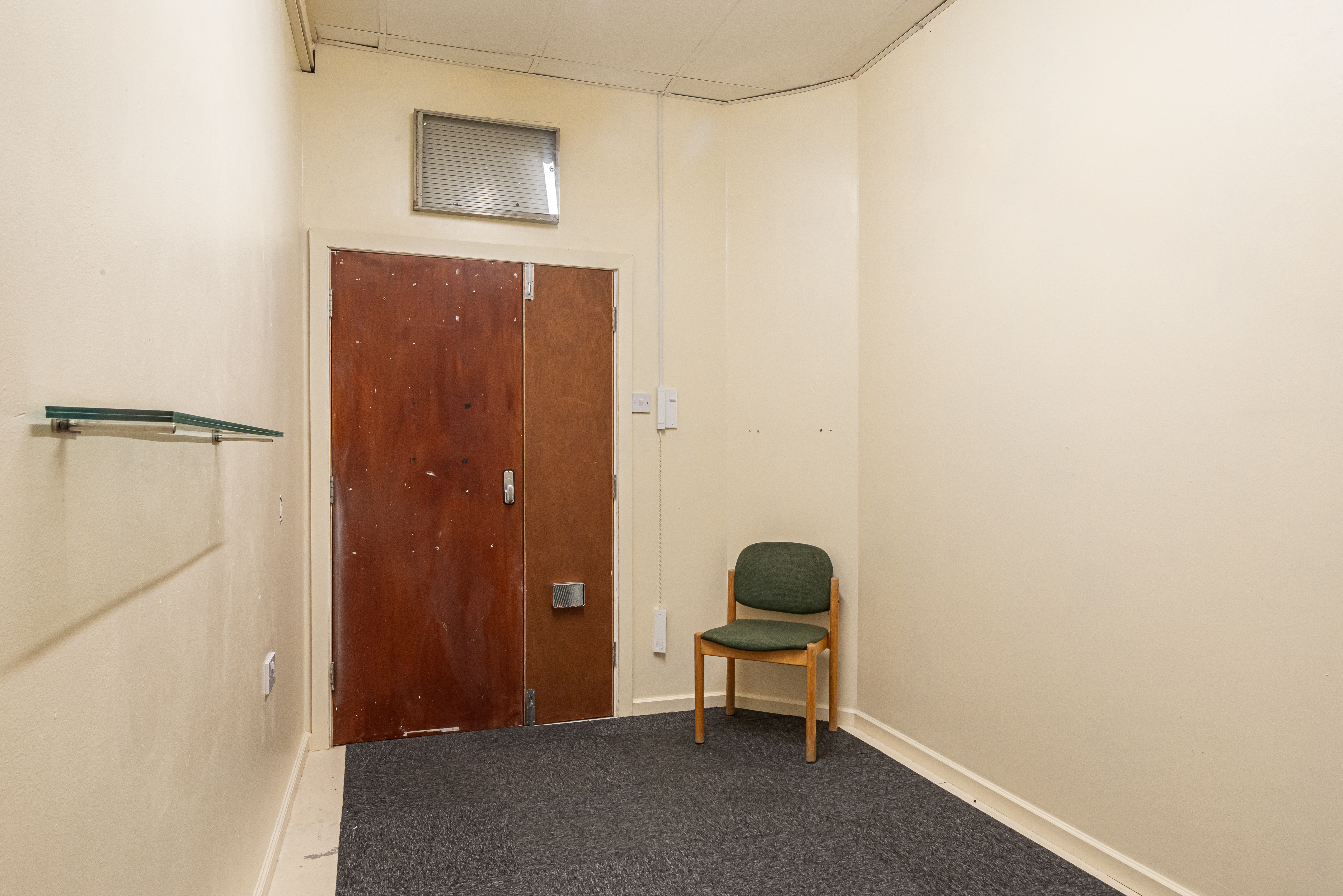
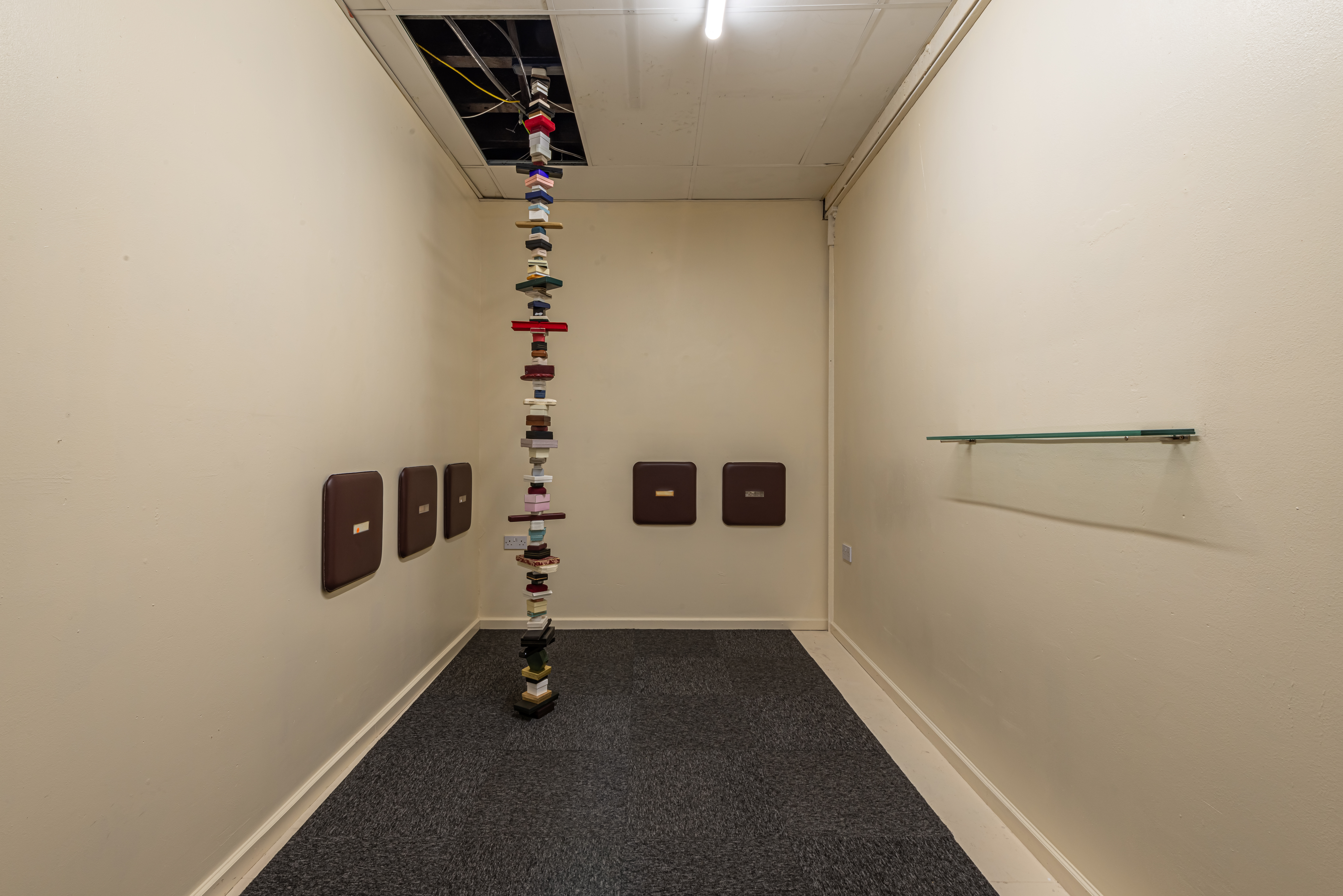
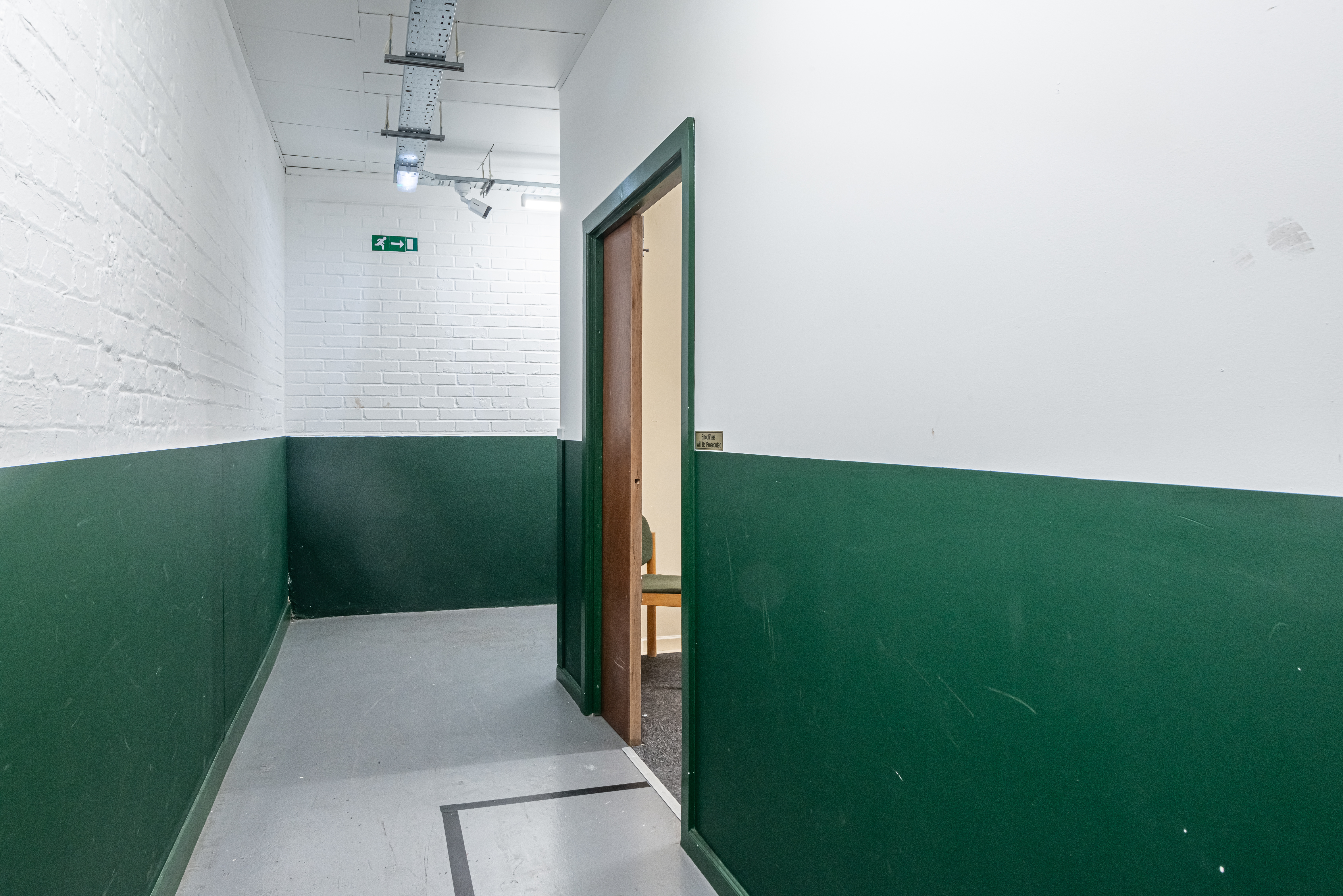
The show also includes fixtures, chair, magnolia paint, fly, pencil and carpet tiles.
